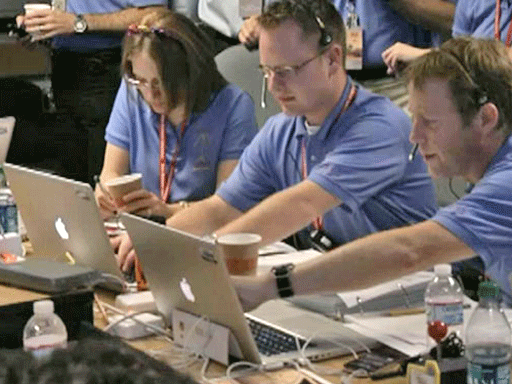Your support helps us to tell the story
From reproductive rights to climate change to Big Tech, The Independent is on the ground when the story is developing. Whether it's investigating the financials of Elon Musk's pro-Trump PAC or producing our latest documentary, 'The A Word', which shines a light on the American women fighting for reproductive rights, we know how important it is to parse out the facts from the messaging.
At such a critical moment in US history, we need reporters on the ground. Your donation allows us to keep sending journalists to speak to both sides of the story.
The Independent is trusted by Americans across the entire political spectrum. And unlike many other quality news outlets, we choose not to lock Americans out of our reporting and analysis with paywalls. We believe quality journalism should be available to everyone, paid for by those who can afford it.
Your support makes all the difference.Apple Macs? The preserve of macchiato-swigging designers and web developers, right? PCs? The preserve of science labs and offices. Or so we thought. But pictures of the Nasa scientists controlling the Mars landing of Curiosity rover showed them all hovering behind Macs. What gives?
Things have changed, explains Adam Banks, editor-in-chief of MacUser magazine, says. "Macs and PCs used to be different," he says. "You could do some things better on one and some on the other. Today, the technical differences are negligible; a Mac is just a really neatly designed PC with an Apple logo on it."
The Apple-focused blog TUAW.com also wondered the same thing as us and discovered that Macs had crept into the Jet Propulsion Lab (where the project is based) when scientists had started bringing their own computers in after the 2006 launch of the Macbook Pro, which was much more powerful than its predecessors and ran on processors reliable enough to make the computations necessary for a project as complicated as the Curiosity rover.
"The phenomenon of 'bring your own device' has been huge for Apple," Banks says. "And it's no surprise to see it in action at Nasa. The computers for the Apollo programme were screwed to the floor, but nowadays there's all sorts of kit floating around. In a geeky environment like JPL, of course people are going to want to use their own laptops for work, not some crap that their boss bought in on the cheap."
And they'll still do a fine job if you're just playing Farmville in Caffè Nero, too.

Join our commenting forum
Join thought-provoking conversations, follow other Independent readers and see their replies
Comments